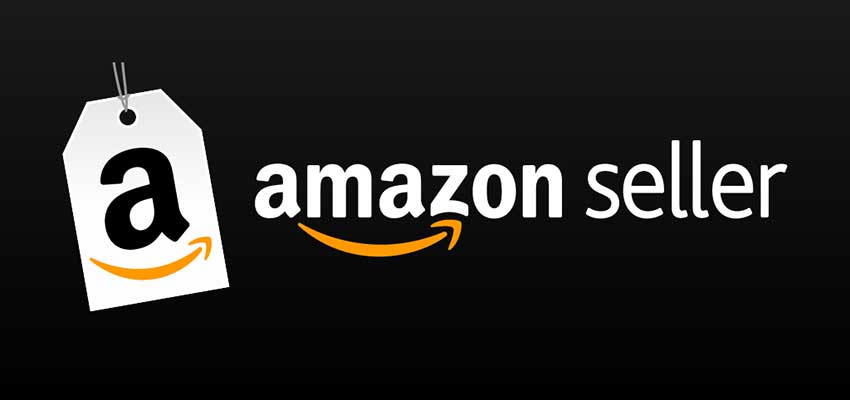Show:
What Can Sellers Learn from Amazon’s 2022 Fee Increases?
Sellers on Amazon have been working with fairly tight profit margins for a while now, but now those margins are going to get even tighter. At the end of 2021, Amazon announced several changes (mainly fee increases) that will definitely impact the way third-party sellers make money on the platform. While the primary fee increases have to do with FBA (Fulfillment by Amazon) warehouses, there’s another major change coming too, with Amazon limiting inventory storage for sellers who use FBAs.

None of this is great news for sellers, but that doesn’t mean they just have to deal with it and move on. In fact, some have the perspective that these changes are an opportunity to set themselves apart from the competition. In order for that to happen, though, you’d need to take advantage of accurate data to guide your business decisions. A profit calculator like Shopkeeper, for instance, shows you real-time profit margins item by item; not only can you see which items are bringing you the most money, but also how Amazon’s higher fees are impacting your bottom line. You can also use Shopkeeper to track your inventory, so even with reduced stock in FBAs, you’ll never run out because of inadequate planning.
Looking at Amazon’s strategies
Whether you call it greed or good business practice, Amazon has never been shy about hiking seller fees even while offering competitive prices and deals to its customers. Even though sellers are directly impacted by the fees they pay to Amazon, they might still benefit from taking a page out of Jeff Bezos’ book. By imitating some of his strategies, they could not only improve their perspective, but the strength of their business.
From a seller’s point of view, the inventory limits (as well as new fees for long-term storage) could make things considerably more complicated. It’s not that they can’t keep adequate amounts of each item in stock with careful planning; it’s just that they’ve never had to before. Previously the main concern was having enough products in FBAs to fulfill orders; now sellers will also have to comply with the inventory limits set by Amazon.
If you’re only looking at this from one perspective, it just seems like one more thing that Amazon sellers have to deal with. If you’re seeing it from Jeff Bezos’ point of view, though, the verdict is a bit different. FBAs are used by about 91% of Amazon sellers, and demand has done nothing but rise lately. That being the case, the company had to make a decision – would they allocate their storage space to the first sellers who asked for it, or would they limit the number of units each person could store so that more people could use the FBA warehouses? It’s clear to see which option they chose, and even though it’s hardly popular with the sellers, it gives Amazon room for growth without the need for building multiple new FBAs.

The sellers who adjust quickly are more likely to come out ahead
Every Amazon seller will have to adjust to the changes sooner or later, but there’s a good reason why you should do it as quickly as possible. It’s about not only seeing opportunities, but being ready to take them. Here’s a hypothetical scenario to illustrate:
You’re one of several top sellers in a certain category. The FBA inventory limits have just gone into effect, and since some of your competitors didn’t do a very thorough job of forecasting their inventory needs, they’ve run out of some of their best-sellers. You haven’t run out, though, because your inventory is managed according to accurate forecasts, and you know just how many of each item you’ll have to keep in the FBAs. If you were using Shopkeeper, for instance, you wouldn’t just be able to seamlessly adjust the way you manage inventory; you’d also be able to view real-time data to see the minute customers started buying up certain products, because they couldn’t find them anywhere else. So what’s your next move? Scarcity creates value, and you could potentially charge up to twice the price for those in-demand items that only you had the foresight to keep in stock.
As it happens, this is pretty much what Amazon is doing with their fees and FBA inventory policies. The higher the demand, the more you could end up paying for something – and Amazon’s FBAs are very much in demand, despite rising fees and tightening policies. Charging what you can, not what something is worth, is just the way business is done. Going back to the example above, notice what isn’t mentioned: how the customers will feel when they suddenly have to pay twice the price as before. They may not like it, but making people happy doesn’t necessarily improve profit margins.
Make profit your priority
Rather than getting down about Amazon’s higher fees and stricter policies, try to turn the situation around: look at the reasoning behind their business decisions, and see if that could apply to your Amazon store. For example, Amazon’s increased seller fees could drive out some sellers that will no longer be able to make an acceptable profit – but to Amazon, that’s an acceptable trade-off. By the same token, you might be hanging onto certain low-margin items that don’t make you that much money, when you could cut them out and focus on developing high-margin offerings instead.
In order to know which items do and don’t belong in your store, however, you need to know the margins for every one of them, and that’s where Shopkeeper can help. Rather than making you pull multiple seller reports from Amazon, Shopkeeper calculates profits based on the 72 different Amazon fees, COGS, refunds, administrative fees, and anything else that affects the bottom line. The best part? All this information gets distilled into an easy-to-read dashboard that’s both intuitive and accurate. If you want to make bolder, more decisive moves to drive your business forward, this kind of seller tool is something you want on your side. To give Shopkeeper a try, all you have to do is sign up for their extended 30-day free trial.

 Return to Previous Page
Return to Previous Page








